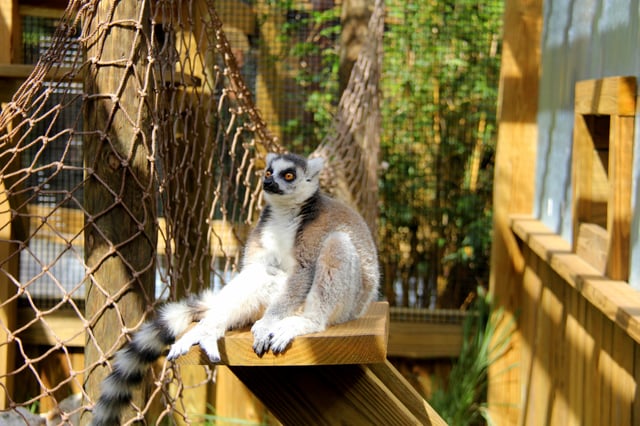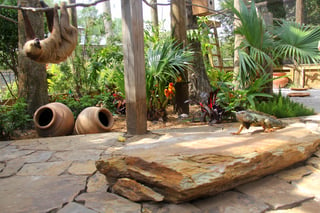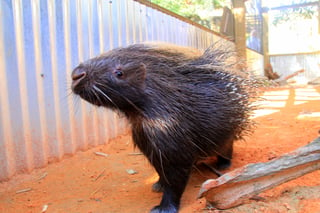
Many of our guests have commented on and inquired about how we make the enclosures for our Wild Florida animals, so we decided to share what goes into creating these happy homes.
It actually starts before we ever get the animal – we have to do research. We need to know what their natural habitat is like, and their habits in that environment. We definitely got things right with our two-toed sloth research. Our resident sloth family, Guy, Ana, and George, are guest favorites. Did you know the sloths also gave us their animal seal of approval? Animals only breed when they feel comfortable enough with their home. Just like most humans, they aren't going to bring a baby into a home if they're feeling unsettled. That's part of the reason why we were very excited to welcome baby George! (The other part was just because he's adorable.)
 So what did we find out with our sloth research? Sloths spend 90% of their life up in the trees. They're built for life up in a tree canopy, literally; they have claws designed for hanging from branches. Sloths are also slow movers, so they like to blend in with their environment. So we built a multi-platform environment all connected by ropes. We also added in trees and hiding places so they could nap in privacy. If you stop by to see them, you'll notice that they aren't alone. We gave them roommates: an iguana, sun conures, and an aracari. These animals would all hang out together in the wild, so we wanted to give their home that natural touch. All of the inhabitants are all herbivores, so they don't threaten one another.
So what did we find out with our sloth research? Sloths spend 90% of their life up in the trees. They're built for life up in a tree canopy, literally; they have claws designed for hanging from branches. Sloths are also slow movers, so they like to blend in with their environment. So we built a multi-platform environment all connected by ropes. We also added in trees and hiding places so they could nap in privacy. If you stop by to see them, you'll notice that they aren't alone. We gave them roommates: an iguana, sun conures, and an aracari. These animals would all hang out together in the wild, so we wanted to give their home that natural touch. All of the inhabitants are all herbivores, so they don't threaten one another.When the opportunity presented itself to take in lemurs, our research took us in a different direction. Lemurs are social primates that require a lot of physical and mental stimulation. So we made swings, ropes, climbing posts, and hiding holes. We also set the environment up so it could be changed often to keep these guys on their toes. Lemurs form tight social groups, so we made sure that both our ring-tailed lemurs and red ruffed lemurs were not alone. Since they form such tight bonds, they just want to be with one another. This is why we didn't include any other species in these environments.

One of the most important things we also have to consider is how they'll interact with the environment itself. Have you met Stella and Safari? They're our amazing African crested porcupines. Besides showing off their sweet quills, these gal pals love to dig and chew. While building their exhibit, we dug down several feet to add wire all along the bottom of the exhibit so they couldn't dig out. Every morning, the keepers fill in holes, and sometimes they will even bury food for the porcupines to find (it's fun enrichment!). We also have a lot of different types of wood in their habitat for them to chew. We replace and renew wood all the time; rodents are known for chewing to keep their teeth filed down because they are always growing.
Each exhibit is built and maintained with love, not only for them, but for Florida. All of our exhibits have wire on the ground to also keep native Florida animals out and our animals in. Florida's natural ecosystem is something we love and protect. After you visit these international animal ambassadors, don't forget to check out our native wildlife on an airboat ride.





